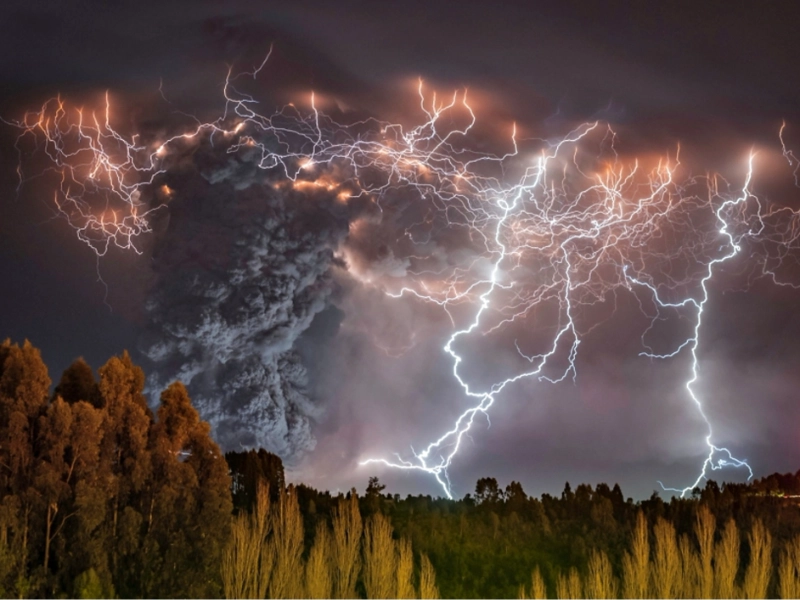Volcanic Lightning: Nature's Electrifying Spectacle
Advertisement
3. Types of Volcanic Lightning

Advertisement
There are various kinds of volcanic lightning, each unique in nature and having roots within the eruption process. Knowing these several forms allows researchers to better understand the dynamics of volcanic eruptions and the factors behind those electrical discharges. Through an analysis of the several forms of volcanic lightning, scientists can acquire important understanding of the interior dynamics of volcanoes and the intricate mechanisms involved in eruptions.
We call the first kind vent discharges. Usually little, fast flashes of light, these happen close to the mouth of the volcano. The great fracturing of magma when it bursts out the volcano's crater causes vent discharges. Localised charge variations produced by the abrupt separation of particles in this location produce very fast, brilliant sparks. Usually the first symptoms of electrical activity during an eruption, these discharges can also give early clues of the strength of the eruption.
Then we have near-vent lightning. Usually within a few km of the vent, this kind arises in the bottom portion of the eruption column. Producing obvious bolts of lightning, near-vent lightning often has more power than vent discharges. The great mixing and collision of particles in the turbulent lower plume generates these discharges. For someone near a volcano, near-vent lightning can be especially deadly since it mixes the risk of electrical strikes with the perils of falling ash and debris.
Maybe the most amazing kind of volcanic lightning is plume lightning. It happens higher in the eruption column and occasionally extends several kilometres into the atmosphere. Huge, branching bolts produced by plume lightning can light the whole ash cloud. The great-scale charge separation produced as the plume rises and spreads generates this kind of lightning. A useful tool for distant monitoring of volcanic activity, plume lightning can be seen from considerable distances and often mimics classic thunderstorm lighting.
Certain eruptions also generate filthy thunderstorms, which are basically consistent regular thunderstorms created in the top levels of big eruption columns. These happen when the volcanic plume climbs high elevations with sub freezing temperatures. Much as in a normal thunderstorm, the combination of ash, ice, and water droplets in these high-altitude clouds can produce lightning. Long after the first eruption has stopped, dirty thunderstorms can linger producing lightning as the ash cloud spreads.
Finally, there is a rare kind known as sheet lightning. This shows up as a diffuse glow from within that highlights most of the ash cloud. Electrical discharges occurring between layers of differently charged ash within the plume are believed to produce sheet lightning. Though less visually striking than other types of volcanic lightning, sheet lightning can offer important details about the internal structure and charge distribution in the ash cloud.
You May Like
Advertisement

